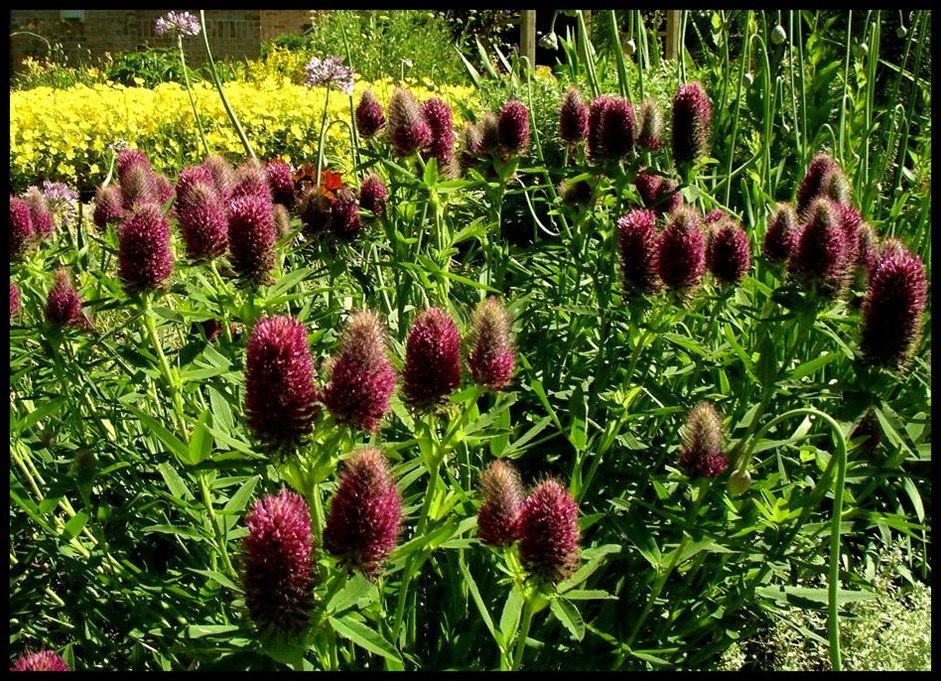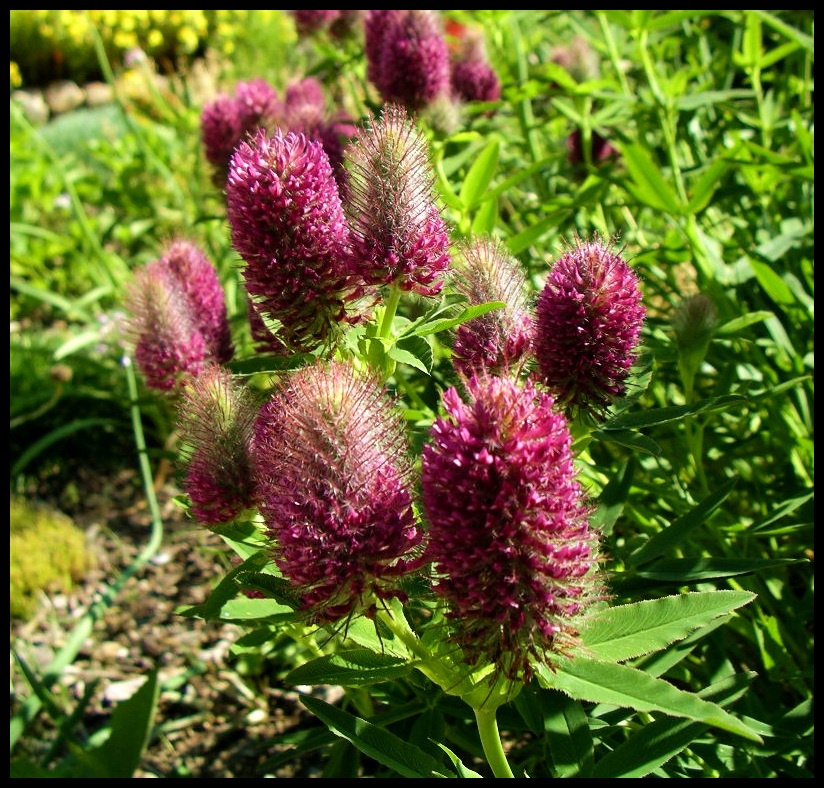Plant of the Month for April, 2012

Trifolium rubens 'Red Feather'
(try-FOH-lee-um ROO-benz)
General Information:
This is a clover, but not just any clover. It is the most ornamental of all Clovers and definitely worth adding to your garden. Best of all, your friends will never guess what it is.
Red Feather is easy to grow and does not spread. It has huge, purple-red flower heads that are silver when in bud and are borne on long stems. The plant makes a nice clump and looks good all summer. The flowers are peculiar in that each stem has two flowers, one larger than the other. The large one opens while the smaller one is still developing. Just as the large one is finished flowering, the second open starts to open. The result is a longer bloom time for the plant.

Trifolium rubens; photo by Robert Pavlis
It is great for attracting hummingbirds, butterflies and bees. It makes a good cut flower.
The name for this plant is a bit confusing. It is listed as T. rubens, T. rubens ‘Red Feather’ and as T. rubens with a common name of Red Feather Clover. Jelitto Seeds considers the term Red Feather a marketing name. I have tried the so-called named variety and the straight species. Both look the same to me. I suspect that the variety ‘Red Feather’ does not actually exist – they are all just the species. In any event, this is a must have plant.

Trifolium rubens; photo by Robert Pavlis
Life Cycle: perennial
Height: 60 cm (2 ft)
Bloom Time: mid summer
Natural Range: Central and south Europe
Habitat: Grows in grassy places next to forests and forest glades
Synonyms: none
Cultivation:
Light: full sun or part shade
Soil: normal, well draining to sandy soil, pH: 6 – 7.5
Water: draught tolerant
USDA Hardiness Zone: 3 – 8
Propagation: division in spring, comes true from seed and blooms first year after germination.
Seedex availability (ORG&HPS annual Seed Exchange): available regularly
Germination Tips:
Sow @ 4°C.
Contributions to this page were made by: Robert Pavlis
